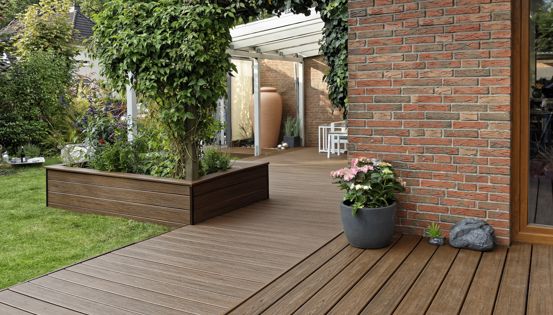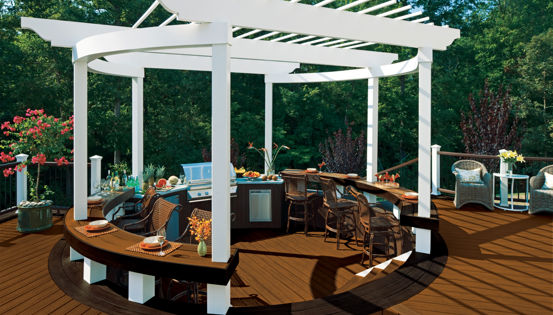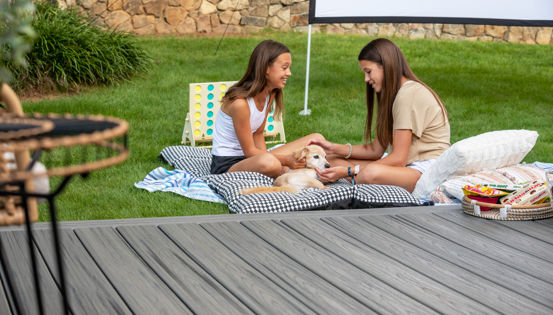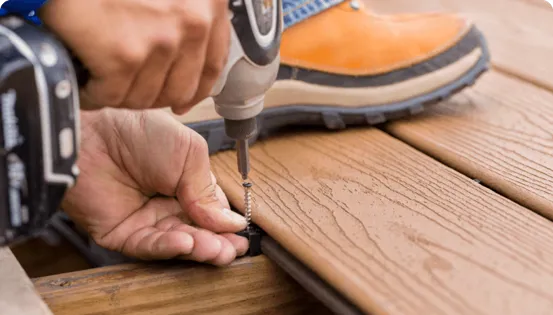This guide walks you through the most popular deck railing materials, design ideas, pros and cons, and customization options—so you can find the perfect railing to match your style, budget, and lifestyle.
Why Railings Matter for Your Deck
Deck railings are more than a finishing touch—they are an essential part of your deck’s safety and style. Most building codes require railings for decks 30 inches or higher, so choosing the right system is as much about compliance as it is about curb appeal.
Railings also define the look of your deck, helping it blend with (or stand out from) your home’s architecture. They can frame your view, add privacy, and even boost resale value. Because railings are one of the first things people notice, the right choice can elevate your deck from ordinary to unforgettable.
Quick Tip: Local codes can vary. Always confirm railing requirements—such as height and spacing—with your local building authority.
Deck Railing Ideas by Material
Each railing material offers a different mix of style, cost, and maintenance level. Use the quick links below to jump to the section you care most about:
Material | Cost | Maintenance | Design Flexibility |
Wood | $ | High | Moderate |
PVC/Vinyl | $$ | Low | Moderate |
Composite | $$$ | Low | High |
Steel | $$ | Moderate | Moderate |
Aluminum | $$$$ | Low | High |
Glass | $$$$$ | Low | High |
Wood Railing Ideas

Wood railings are a budget-friendly classic that offer rustic warmth. They are easy to customize with stains and paint but require regular upkeep.
Design Options:
- Vertical Balusters: Traditional look that pairs well with most homes.
- Metal Balusters: Mix wood posts with powder-coated balusters for easier upkeep.
- Cable or Mesh Infill: Creates a modern mixed-material look.
Pros:
- Most affordable upfront cost
- Easy to source and install
- Flexible design options
Cons:
- Requires frequent maintenance (staining/sealing)
- Susceptible to rot, splitting, and pests
- Shorter lifespan without upkeep
Steel Railing Ideas

Steel railings deliver strength and a classic wrought-iron aesthetic. They’re affordable and sturdy but need occasional painting to prevent rust.
Design Options:
- Vertical Balusters: Simple and strong.
- Geometric Panels: Add architectural interest.
Pros:
- Very strong and durable
- Good value for cost
- Slim profiles preserve sightlines
Cons:
- Can rust if not maintained
- Fewer style options than aluminum
PVC/Vinyl Railing Ideas

PVC railings are lightweight and low maintenance but can look bulkier than composite and be prone to brittleness over time.
Design Options:
- Turned spindles for a traditional look
- Geometric lattice infills
- Mix with aluminum balusters for more style options
Pros:
- Low maintenance
- Affordable mid-tier option
Cons:
- Can look plastic-like
- More brittle in extreme cold
- Limited color options
Composite Railing Ideas

Composite railings combine the look of wood with the durability of recycled materials, offering high design flexibility and minimal upkeep.
Design Options:
- Crown Top Profile: Rounded top rail for a traditional look.
- T-Rail Profile: Flat top rail for a neutral look.
- Classic Profile: A timeless choice that matches most deck styles.
- Composite Balusters: Simple look with low maintenance.
- Aluminum Balusters: Slim, durable, and great for visibility.
- Mesh Infill: Adds texture and a modern edge.
Pros:
- Highly durable and low maintenance
- Many color and profile options
- Can be curved for custom designs
Cons:
- Higher upfront cost
- Bulkier look than aluminum
Learn more about Composite vs. Aluminum Deck Railing
Aluminum Railing Ideas

Aluminum railings are sleek, modern, and virtually maintenance-free. They resist rust and corrosion and often come with 25–50 year warranties.
Design Options:
- Vertical Balusters: Clean, traditional look.
- Mesh Infill: Industrial chic style with high visibility.
- Rod Rail: Horizontal rods create a minimalist aesthetic.
- Cable Rail: Best for maximizing views.
Pros:
- Rust-proof and durable
- Lightweight and easy to install
- Excellent visibility with slim profiles
Cons:
- More expensive than wood or PVC
Check out Trex Aluminum Railings
Glass Railing Ideas

Glass railings create a modern, high-end look and preserve scenic views. They use tempered or laminated safety glass that’s five times thicker than window glass.
Design Options:
- Frameless Glass: Seamless panels for uninterrupted views.
- Aluminum Frame + Glass Infill: Adds durability and structure.
- Composite Frame + Glass Infill: Combines warmth of composite with open views.
- Glass Panels: Check local building codes for approval.
Pros:
- Maximum visibility
- Upscale, contemporary look
Cons:
- Highest upfront cost
- Requires regular cleaning to stay clear
See Glass Deck Railing Ideas & DIY
Custom Deck Railing Ideas

Go beyond standard options with custom features that make your deck more functional and stylish.
Curved Railing

Curved railing follows the contour of round or arched decks for a dramatic, high-end look.
Pros: Unique and elegant
Cons: More complex installation and higher cost
Deck Rail Lighting
Add ambiance and safety with lighting options:
- Post cap lights
- Stair riser lights
- Solar or wired options
- Integrated outlets for convenience
Cocktail Railing

A flat top rail that doubles as a place to set drinks and plates—perfect for entertaining.
Gates
Add gates to enclose pets, secure pool decks, or create separate zones.
Matching Your Deck Railing with the Style of Your Home
Your home’s architecture should guide your railing choice:
- Craftsman Home: Square posts, dark composite rails, simple lines.
- Ranch Home: Low-profile horizontal rails or cable railing.
- Modern Home: Frameless glass or rod rail for a sleek aesthetic.
- Colonial Home: Turned balusters, classic white composite.
- Beachfront Home: Glass for maximum views.
- Cape Cod Home: White railing with X-pattern details.
- Victorian Home: Decorative spindles, ornate post caps.
Ready to Choose Your Railing?
Now that you’ve explored materials, ideas, and styles, it’s time to start planning. Check out these related resources to dive deeper:







